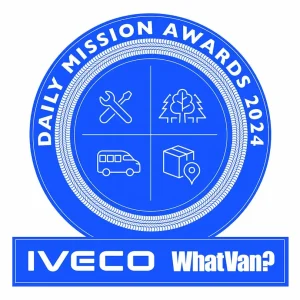The Volkswagen Amarok always had one stand-out feature in its class. It was the only standalone design of new entrants during its lifetime (2010–20). Other new kids on the plot in this period were Fiat’s Fullback – simply a re-badged Mitsubishi L200 – and the Mercedes-Benz X-Class – a (heavily revised) version of Nissan’s Navara.
Volkswagen has played this game before, way back in the late ‘80s, its Taro was a Toyota Hilux with VW roundels applied front and rear, and the new Amarok is a version of the Ford Ranger. VW is not stupid, the Hilux was the best pick-up of its day and (without wishing to set Twitter all-a-twitter) I believe that the Ranger is the best-of -breed today.
In the UK at least the Amarok is only available as the full four-door five-seat double-cab. This means the load length is moderate by van standards but par for the course at 1,555mm with a load width of 1,621mm; meaning long loads will go in sideways – messing with your head! Between the wheel arches, this pinches to 1,225mm with a sidewall height of 780mm. Load height is, of course, unrestricted in standard form or varies with your choice of aftermarket hardtop. The load bed is some 775mm off the ground. Payloads range from 1,030kgs to 1,145 kgs, so all versions managed to hit the VAT reclaim threshold with gross weights at up to 3.3 tonnes.
Depending upon engine type and trim the Amarok would tow up to 3.1 tonnes. It is 5,250mm long and 2,250mm wide sitting upon a 3.1-metre wheelbase. So, it’s 3.0-tonne van size will fit onto a domestic driveway but not a marked parking bay (nor will
a Range Rover or Audi Q7 so it’s a moot point). The driving position and levels of visibility mean its bulk is no issue, most of the time. Although some off-road sections might bring you close to the undergrowth, in truth, anything with this wheelbase isn’t going to manoeuvre like a quad-bike.
On the road it drives really well. Unladen the ride is bit choppy but settles half-loaded and although the automatic is a boon, the manual gear change is strong and slick. The V6 engine (from 2016 onwards with improved interior, too) is the most desirable and hence we picked five such examples for the price table. The four-pot Bi-turbo TDI should not be overlooked, particularly in 180hp guise, and in truth it’s all you’ll ever need. But of course, you may simply want the V6.
The Trendline, kicks-off with 17in alloys (best for off-road tyres) DAB, A/C, cruise control and Bluetooth. The Highline adds heated leather seats, Bi-Xenon headlights, parking sensors and 18in alloys, but no sat-nav – which seems a bit penny-pinching.
You have to get the Aventura to know where you’re going but it adds 20in wheels, chrome-bars and a fake (plastic) sump guard, although automatic lights with cornering function are also up for grabs.
Any version gives you a high-quality build, great engines, good (if not class-best) loading, decent kit and cab comfort with an excellent dealer network. For those reasons, the first-generation Amarok really stands out.
Five best options
1) V6 engine
2) Automatic transmission
3) Highline trim
4) Trendline trim
5) Dealer accessory packs
Five best avoided
1) 140hp engine
2) 160hp engine
3) Manual gearbox
4) Aventura trim
5) Non-approved accessories
Second-hand buys
|
Version |
Plate |
Year |
Mileage |
Price ex.VAT |
|
V6 TDI Highline |
18 |
2018 |
120,500 |
£21,995 |
|
V6 TDI Highline |
19 |
2019 |
64,100 |
£31,495 |
|
V6 TDI Highline |
69 |
2019 |
88,000 |
£21,995 |
|
V6 TDI Trendline |
20 |
2020 |
24,800 |
£127,550 |
|
V6 TDI Highline |
70 |
2020 |
48,495 |
£48,495 |





